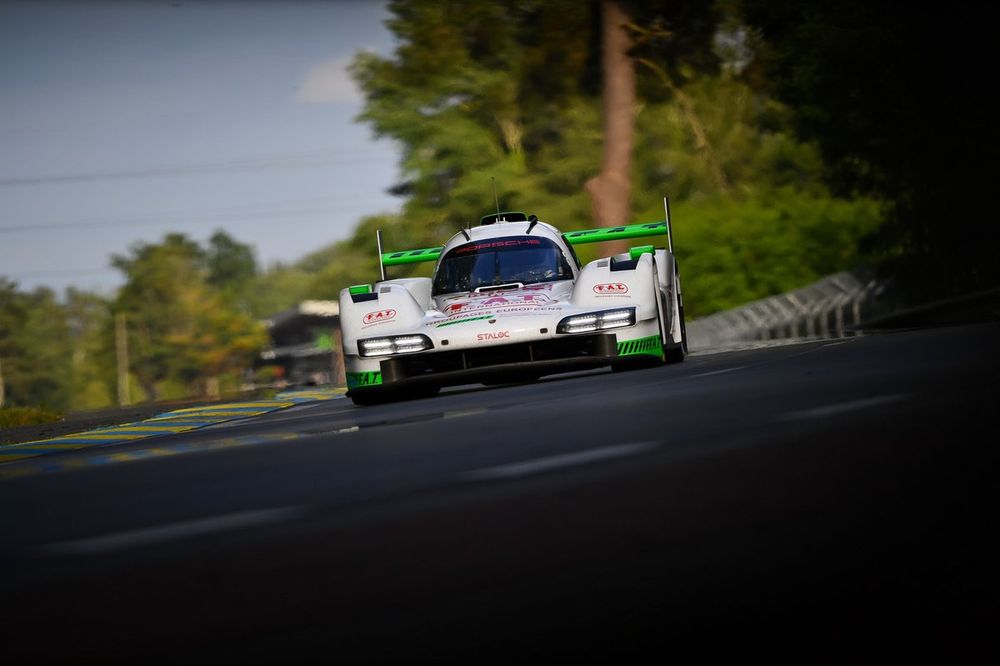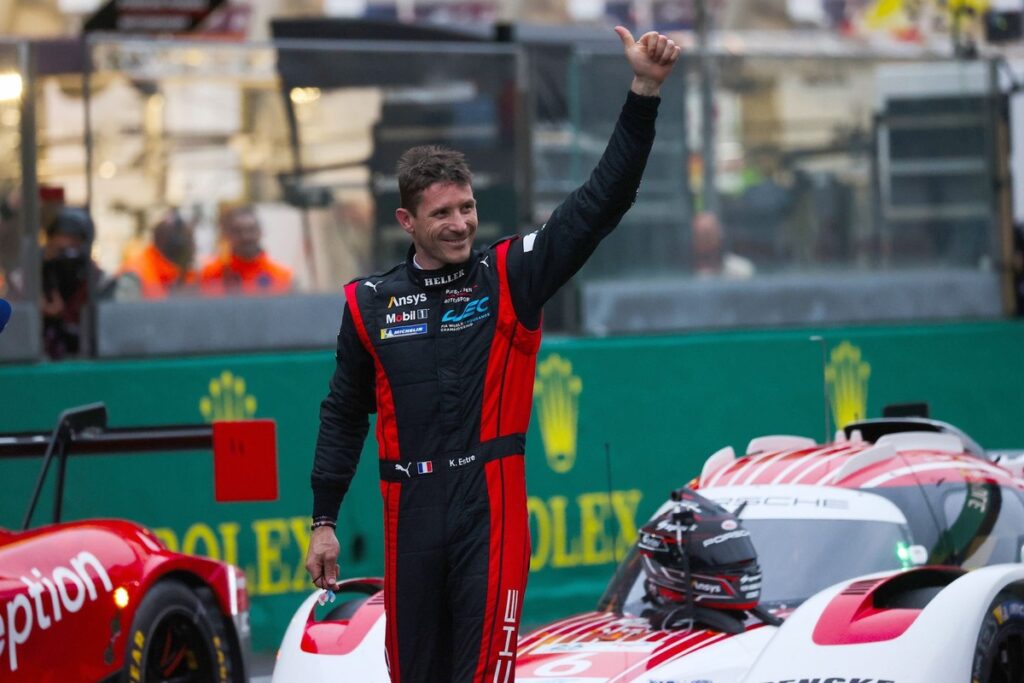Le Mans 24 Hours pole winners Kevin Estre and Neel Jani have welcomed revisions to Hyperpole qualifying under which Hypercar entries will run on track alone at the French enduro.
They have told Autosport that the new procedure introduced for this year’s double-points round of the World Endurance Championship in June will be both fairer and increase the spectacle.
This will result from the drivers in Hypercar not having to deal with slower cars from the LMP2 and LMGT3 classes, which have been separated out from the top category contenders in the new three-round qualifying procedure.
Porsche factory driver Estre, who snatched pole at the last minute aboard his factory 963 LMDh for Le Mans last year, said: “For me it is better, because it is fairer – it will make it less of a lottery.
“In 2024 before my last lap I did not have a clear lap, and I wasn’t the only one, for sure.
“The performance between Hypercar and LMP2 in the corners is so close that you don’t just drive around them and lose a tenth.
“Sometimes it is five tenths because you get stuck behind one for a whole sequence of corners.
“If they [race organiser the Automobile Club de l’Ouest] really want to build a lot of hype around qualifying and getting the pole, then we have to be alone on track to create an even better spectacle.”
Jani, who claimed Le Mans pole in 2015 and ’16 in the Porsche 919 Hybrid LMP1, echoed Estre’s comments.
#2 Porsche Team Porsche 919 Hybrid: Romain Dumas, Neel Jani, Marc Lieb
Photo by: Eric Gilbert
“Dealing with the traffic was part of the game in the old days, but it made it a bit of a lottery,” said the Swiss, who will again race a customer Porsche 963 for the Proton Competition team in 2025.
“For the spectacle it has to be good because there are so many cars and manufacturers in Hypercar now.
“From a safety perspective it is better, because there was always the temptation to take big risks in traffic.”
Jani also stressed that the importance of pole in the modern era is increasing with the competitiveness and size of the WEC’s Hypercar class, which with the arrival of Aston Martin in 2025 now boasts eight manufacturers.
“Track position has become a bigger topic than in the past because there are so many cars,” he explained.
“Starting further back could cost you 30 or 40s in the opening stints, though of course the safety car rules now should allow you to gain much of it back.”
The revision to Hyperpole, which was introduced in 2020, splits the cars into two groups, Hypercar and LMP2 combined with LMGT3, over three rather than two rounds for this year’s race on 14/15 June.
Fifteen Hypercars will progress from an opening 30-minute qualifying session on Wednesday evening, while 12 cars each from P2 and LMGT3 will make it through from their half-hour period.

#99 Proton Competition Porsche 963: Neel Jani, Harry Tincknell, Julien Andlauer
Photo by: Marc Fleury
Five Hypercars will be knocked out after the 20-minute Hyperpole 1 session on Thursday, meaning 10 cars will take part in the Hyperpole 2 finale of 15 minutes.
Eight cars each in P2 and LMGT3 will go through to round three of qualifying.
For the past two years, eight cars in the three classes made it through from one-hour first qualifying on Wednesday to a single Hyperpole session the following day.
In 2020 and ’21, when there were four classes in the WEC, six cars progressed per class.
In this article
Gary Watkins
Le Mans
Neel Jani
Kevin Estre
Be the first to know and subscribe for real-time news email updates on these topics
Subscribe to news alerts
Read the full article here

